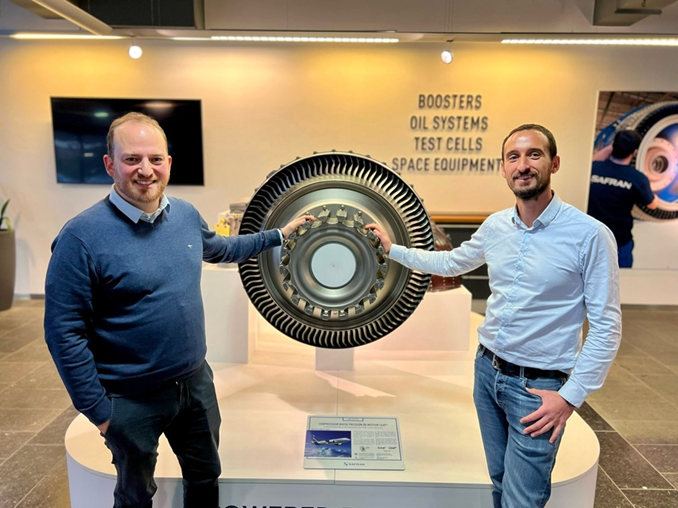High-Performance Computing (HPC) at the service of innovation and new developments in aviation

On the occasion of International Civil Aviation Day, EuroCC Belgium met Safran Aero Boosters in Liège.
Safran Aero Boosters, a Safran group company, is one of Belgium's leading aerospace companies. The company designs, develops and produces low-pressure compressors, equipment and test benches for aerospace propulsion.

Safran Aero Boosters, a technology partner to aerospace engine manufacturers
[EuroCC Belgium] Can you tell us more about Safran Aero Boosters' use of High-Performance Computing? What infrastructure do you use, since when and for what types of developments?
"We have been using HPC for over 15 years! Whether for computational fluid dynamics (CFD) simulations in the Aerodynamics Department or more recently to calculate parts in the Mechanical Department, as additive manufacturing enables us to manufacture increasingly complex geometries in an integrated way. By the end of 2024, we hope to have all our calculations carried out using HPC, whether in Aerothermy, Mechanics or Aerodynamics."
Separate HPC infrastructures
The Safran Aero Boosters teams use two different infrastructures: the Tier-1 Lucia supercomputer in Belgium and the CCRT in France. "This allows us to operate continuously, even in the event of infrastructure maintenance. They also help us to cope with the growing need for computing hours as we use 10% more CPU hours every year!"

The brand-new Lucia supercomputer operated by Cenaero (Belgium) Compute infrastructure is among the Top 500 Most Powerful Computers in the World with a computing power of 4 aggregated Pflops.
A set of programs developed with supercomputing
"We have used supercomputers on all our programs: the Leap, the Silvercrest but also the high-speed compressor developed as part of RISE, the maturation and technology demonstration program whose objective it is to offer an engine that consumes 20% less fuel than the Leap engine."

LEAP-1A: Airbus A320 neo engine
[EuroCC Belgium] Aeronautics is a cutting-edge sector with complex and long development cycles. Faced with environmental challenges and ambitious plans for decarbonization, ultra-frugality and then net zero by 2050, we are experiencing an unprecedented acceleration of development and innovation cycles. In this context, what is the role of HPC?
"HPC makes it possible to develop methodologies and parts, and design them at a lower cost, to move forward in terms of optimization. It allows innovative solutions to be tested much faster, which was not the case previously because it had to be done through trial and error. Thanks to HPC, we can run more calculations, consider more complex geometries or extend the computational domain to model the entire part at a lower cost.
The contribution of HPC to the decarbonization of aviation is well established! We have to look for gains wherever possible, this requires us to model the parts in an ever more precise way to go as far as possible in the optimization and therefore improve the performance of our parts to ultimately reduce the overall consumption of the engine. These new developments, driven by the global goal of 'net zero emissions by 2050', would be inconceivable without high-performance computing."
[EuroCC Belgium] What new developments could be achieved with HPC?
"At Safran Aero Boosters, the development of new technologies can only be achieved through high-performance calculations to finely model these increasingly complex parts, which are highly integrated into the engine's architecture.
From an aerodynamic point of view, the phenomena in the fast booster become unsteady, so the methods implemented for the previous generation of booster must evolve, which increases the need for computing resources to understand and optimize the phenomena.
On the aerothermal side, HPC is also essential because it makes it possible to calculate a complete heat exchanger (fins, oil circuit, etc.), which is impossible without the use of a supercomputer."

Benoît Dompierre (right), Cenaero & Leader EuroCC Belgium meets Gilles Ayoub (left), Head of the Mechanical Methods and Calculations team, Safran Aero Boosters.